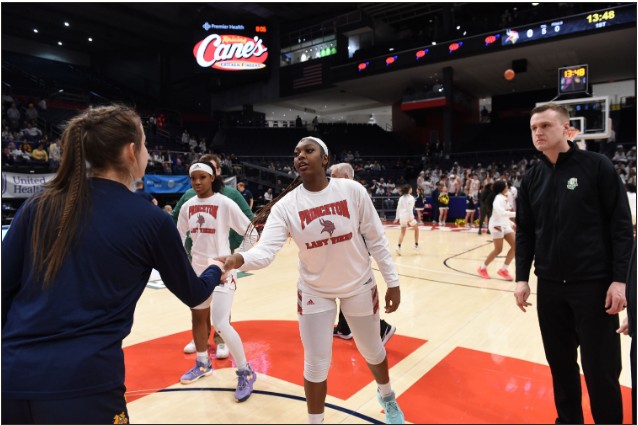For Father’s Day, my 79-year-old Dad asked me to find a copy of the 1973 UCLA-Memphis State NCAA championship game.
Bill Walton was his favorite player. John Wooden was his favorite coach and Dad was curious to see if his memory exceeded the reality of their joint excellence. Since that particular game is on YouTube, it was a pretty easy find.
Walton displayed elite footwork in the lane while pouring in 44 points on 21-of-22 shooting as UCLA cruised to its seventh straight tourney title.
But what really stuck out to me in watching the game was the comportment of the players and coaches. There was very little, if any, whining over an official’s call, and no jawing at all between the players.
So I watched another UCLA game on YouTube, when Lew Alcindor led the Bruins over Dayton for an NCAA championship. This game was in black and white, but if anything the behavior of players and coaches was even more exemplary.
It was and is in stark contrast to what we see today. Complaining about officiating or jawing between teams is so commonplace it’s no longer noteworthy.
If you’re in a nostalgic mood, pick a sport (and I have): NFL, Major League Baseball, college football. Check out a game from the 1970s or before and notice the difference in behavior.
Obviously there are exceptions. Woody Hayes and Bobby Knight’s boorish act was an embarrassment in those days, but would fit right in today. Earl Weaver was the poster boy for getting tossed out of Major League Baseball games in that era, too.
But those were the exceptions to the rule.
My mother was never a sports fan, but when my siblings and I got started in Little League and girls softball, she was adamant we ALWAYS practice good sportsmanship.
Any act that one of her children might commit that could be considered being “a poor sport” would be dealt with immediately and severely at home — up to and including the loss of playing the sport at all.
I’ve reflected on that lesson quite a bit over the past 50 years, and as usual, Mom was right. It seems quaint to say good sportsmanship matters. Of course it does. We should all wear seatbelts, too, right?
But showing some grit in tough circumstances, losing with grace, never goes out of style.
I don’t remember our team’s records, let alone specific games all these years later. But I remember a buddy who constantly threw his helmet and bat when he struck out. I remember a coach who kicked the fence into disrepair when his team lost.
I covered a game where a high school coach was suspended for trashing an opposing team’s locker room when his squad lost on a horrendous call.
On the other hand, I vividly remember a contest from 30-plus years ago that pitted two of my favorite north central Ohio high school coaches, Mike Leeper and Roy Shoulders. It was a girls basketball game between between Madison and St. Peter’s and the Spartans were on the wrong end of an erroneous official’s whistle that led to a loss.
After the game I clearly remember Madison coach Mike Leeper commenting, “I’ll tell you what, I don’t think I could’ve have handled that nearly as well as Roy just did.”
Class counts.
If you’re coaching, if you’re playing, the game you can control and ALWAYS win is the game of sportsmanship.
Character matters. We splash plenty of attention on winners. But every game has someone or some team coming out on the short end, too. Those that do so with style earn everyone’s respect.
The kids used to say hate the player, not the game. I never liked that phrase. But the approach to competing against the game, rather than the foe has some semblance of balance to it.
Created in 2004, the Respect the Game program was the culmination of the Ohio High School Athletic Association’s Sportsmanship, Ethics and Integrity Committee along with ideas and input from administrators, coaches and student-athletes across Ohio.
To that end, high school sports season begins again in a couple of weeks, and the OHSAA has offered a few tips on sportsmanship for players, coaches, parents, fans, students and administrators.
They are listed in the PDFs below.

